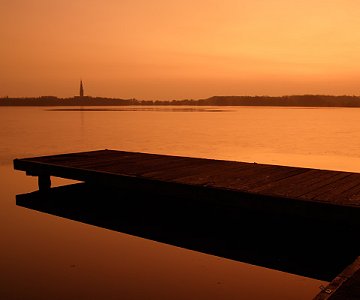| Where's Saturn? Is that a UFO--or the ISS? What's the name of that star? Get the answers from mySKY--a fun new astronomy helper from Meade. | |  |  SPY-SAT DEBRIS: If Pentagon estimates are correct, almost all of the debris from shattered spy satellite USA 193 has now re-entered Earth's atmosphere. A group of sky watchers in western Canada may have witnessed some of the fragments about ten minutes after the Feb. 20th Navy missile strike. "The debris seemed to come in waves ... with about 6 bright trails and 15 fainter ones," according to their report. More debris may yet re-enter along the satellite's former flight path, but the chances of a USA 193 meteor shower are declining. [comment] SPY-SAT DEBRIS: If Pentagon estimates are correct, almost all of the debris from shattered spy satellite USA 193 has now re-entered Earth's atmosphere. A group of sky watchers in western Canada may have witnessed some of the fragments about ten minutes after the Feb. 20th Navy missile strike. "The debris seemed to come in waves ... with about 6 bright trails and 15 fainter ones," according to their report. More debris may yet re-enter along the satellite's former flight path, but the chances of a USA 193 meteor shower are declining. [comment]
 EXPLODING ECLIPSE: During the darkness of Wednesday's lunar eclipse, George Varros of Mt. Airy, Maryland, observed a flash of light--a meteorite hitting the Moon. The small space rock exploded on impact in a southern bay of Oceanus Procellarum: EXPLODING ECLIPSE: During the darkness of Wednesday's lunar eclipse, George Varros of Mt. Airy, Maryland, observed a flash of light--a meteorite hitting the Moon. The small space rock exploded on impact in a southern bay of Oceanus Procellarum:

Click to view the movie
Meteorites hitting the Moon? It happens surprisingly often. Since 2005, astronomers at NASA's Marshall Space Flight Center have recorded nearly one hundred lunar strikes. Meteoroids as small as a softball hurtling into the Moon at 100,000 mph produce flashes of light visible in backyard telescopes on Earth. Varros himself is a veteran observer of these "lunar meteors" using an 8-inch Celestron and digital video camera. This is, however, the first lunar meteor ever seen during an eclipse. "We had very nice conditions in central Maryland for the lunar eclipse," says Varros, "and it was spectacular to say the least!" Lunar Eclipse Photo Gallery
[Interactive World Map of Eclipse Photos]  ACID SUNSET: The UK, Netherlands, Germany and Scandinavia are experiencing a series of unusually bright and colorful sunsets. "It looks very mysterous," reports Michiel de Boer of the Netherlands. "The sky does not turn the usual twilight-blue. Instead, it remains yellow even after sunset and only slowly fades away." As an example, he offers this snapshot taken Feb. 18th: ACID SUNSET: The UK, Netherlands, Germany and Scandinavia are experiencing a series of unusually bright and colorful sunsets. "It looks very mysterous," reports Michiel de Boer of the Netherlands. "The sky does not turn the usual twilight-blue. Instead, it remains yellow even after sunset and only slowly fades away." As an example, he offers this snapshot taken Feb. 18th:

"I took the picture using my Canon 350D," he says. "Here's another showing the sky 50 minutes after sunset." What is going on? Atmospheric optics expert Les Cowley explains: "Volcanic ash high in the stratosphere can give us similar twilights but is not the cause this time. A more likely explanation is Type1 polar stratospheric clouds (PSCs). These clouds are located 15-25km (9-16 miles) above the earth and they can be illuminated by the sun even after 'sunset.' The exceptionally low temperatures needed to form Type 1 PSCs have existed over Europe for the last day or so." "Type1 PSCs are composed of nitric acid compounds and are less colourful and bright than the better known Type2 or nacreous clouds made of ice crystals. Sometimes we see nacreous clouds embedded in their less colourful acidic neighbors." More images: from Rob Stewart at Mull loch na keal, Western Scotland; from Jacob Kuiper of De Bilt, The Netherlands; from Martin Mc kenna of Maghera, Co. Derry, N. Ireland; from Eva Seidenfaden of Trier, Germany; from Graeme Whipps of Aberdeenshire, Scotland, UK; from Jeremy Housman of Ramsgate, Kent, United Kingdom; from Vincent Phillips of Hale Village (Near Liverpool) England; from Reinhard Nitze of Barsinghausen, North Germany; from Katherine Scott of Ardrossan, Scotland; from Jan Koeman of Kloetinge, The Netherlands; React: Comment on this story
| 
